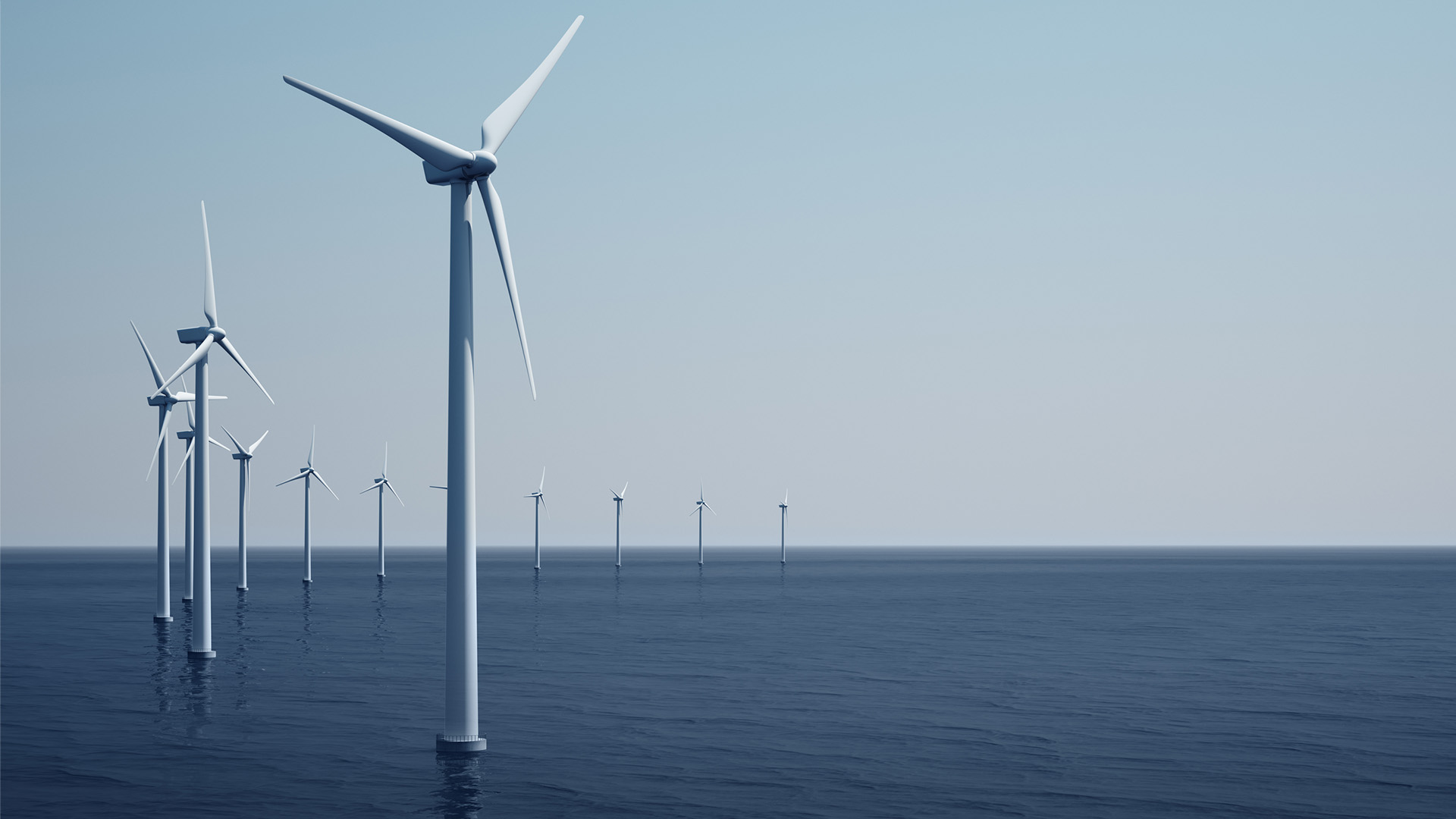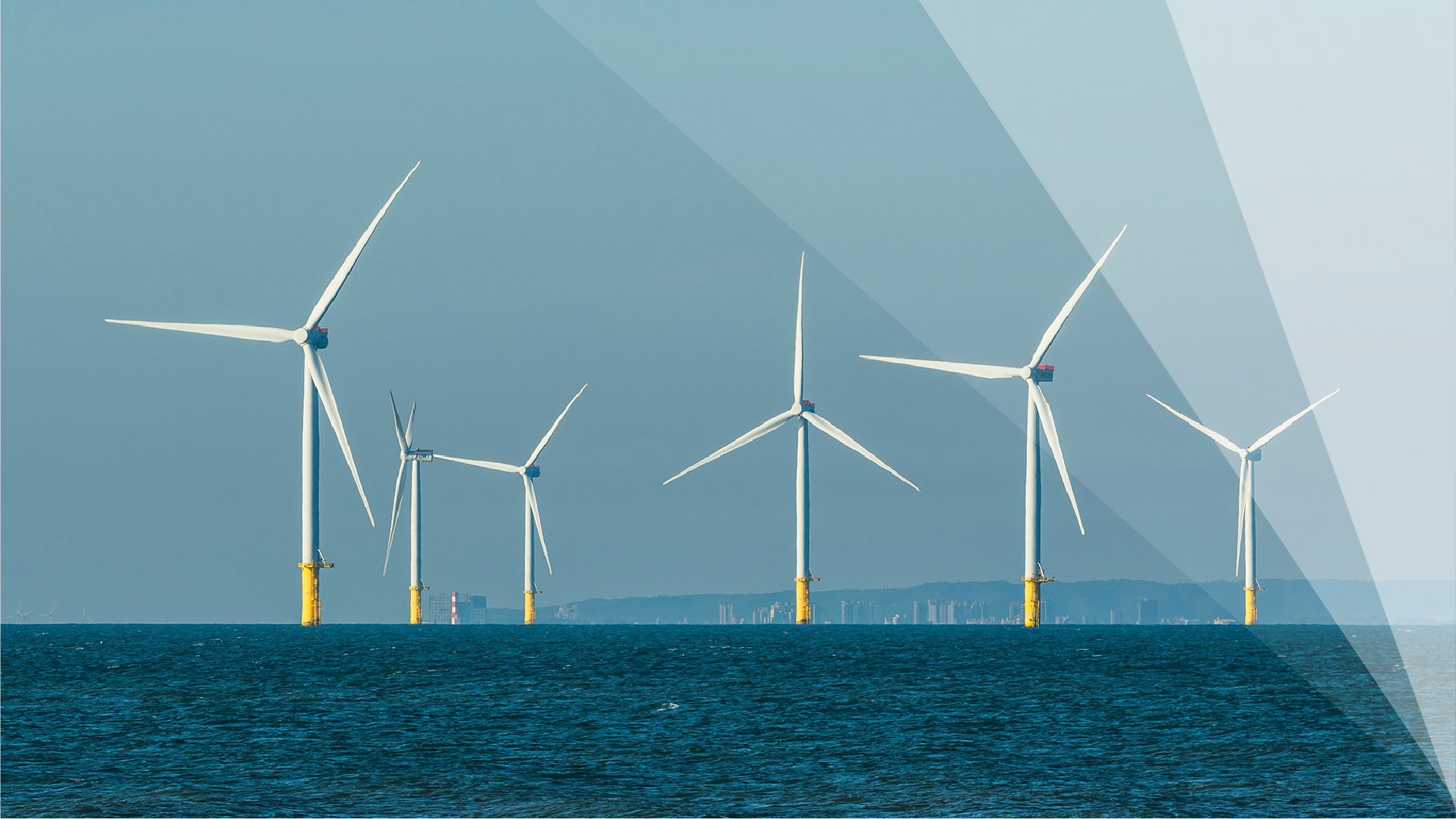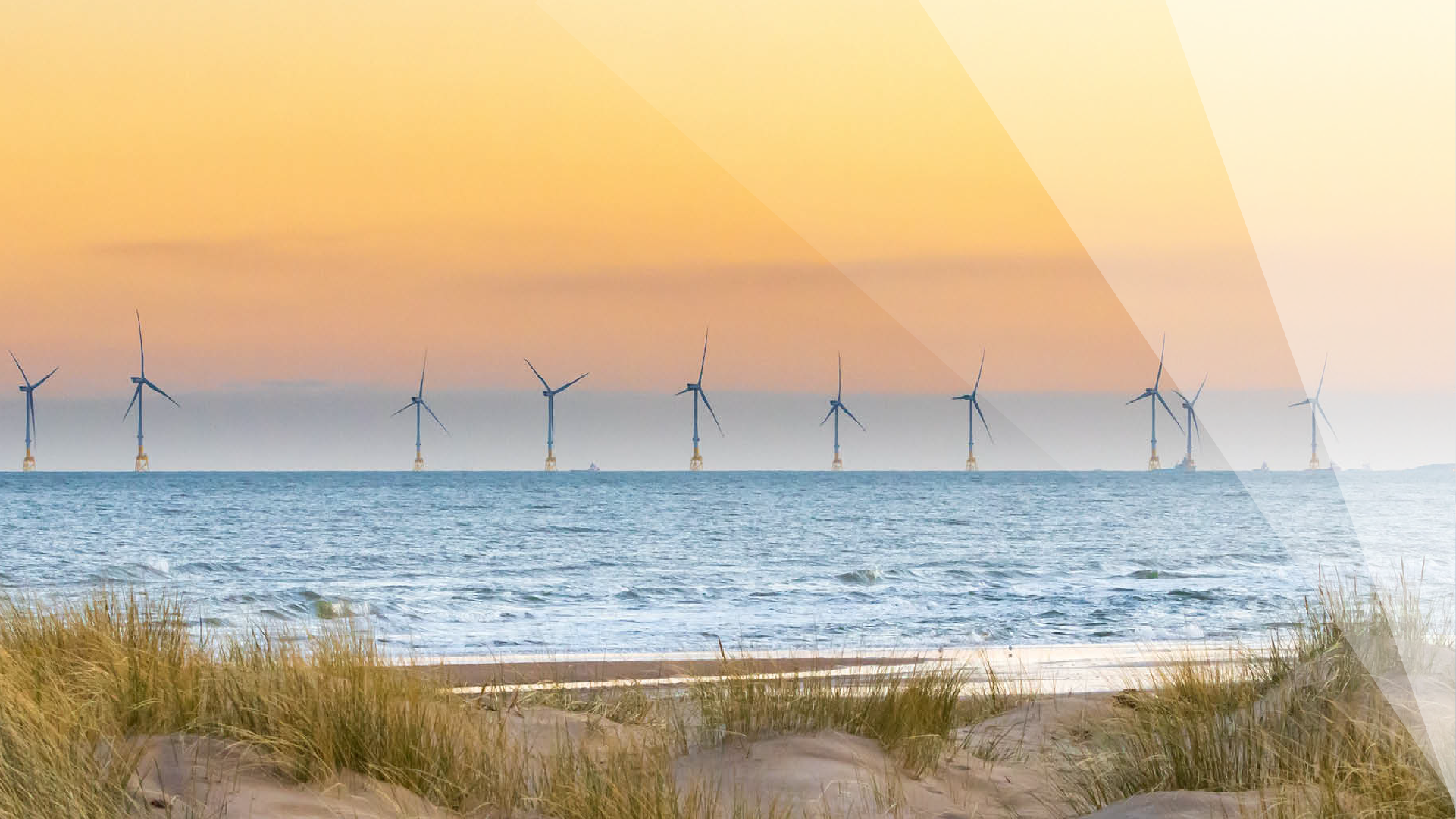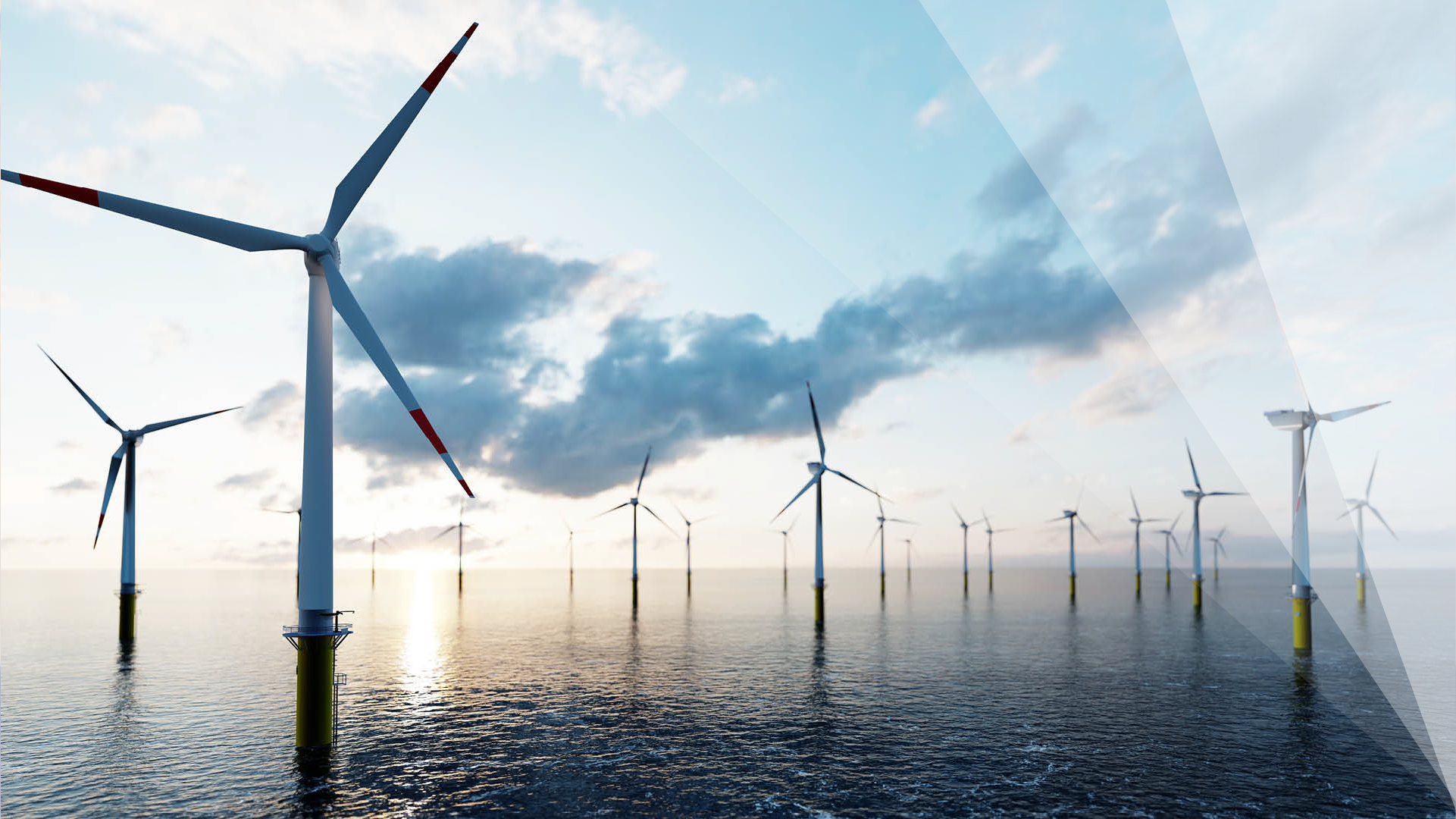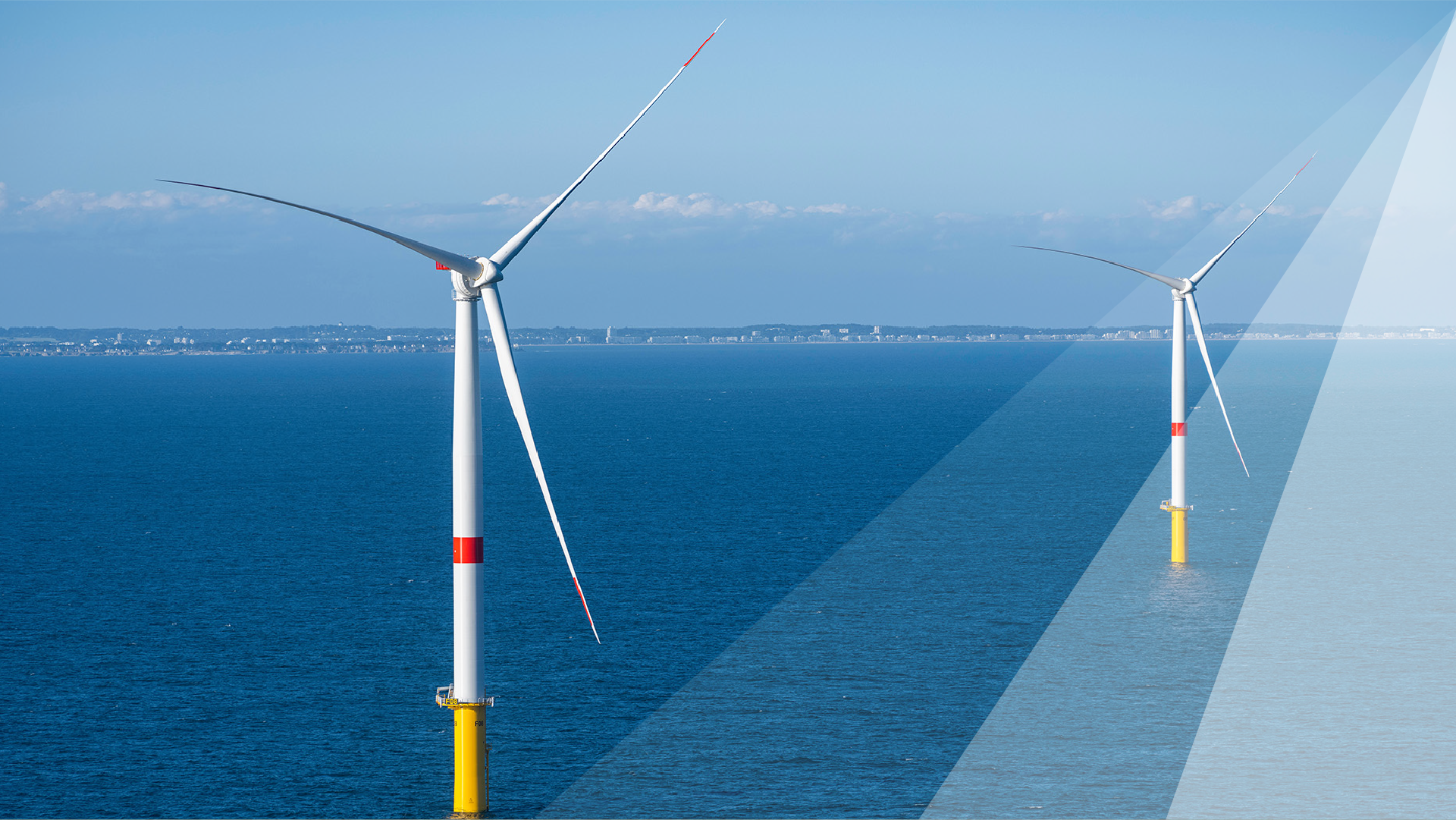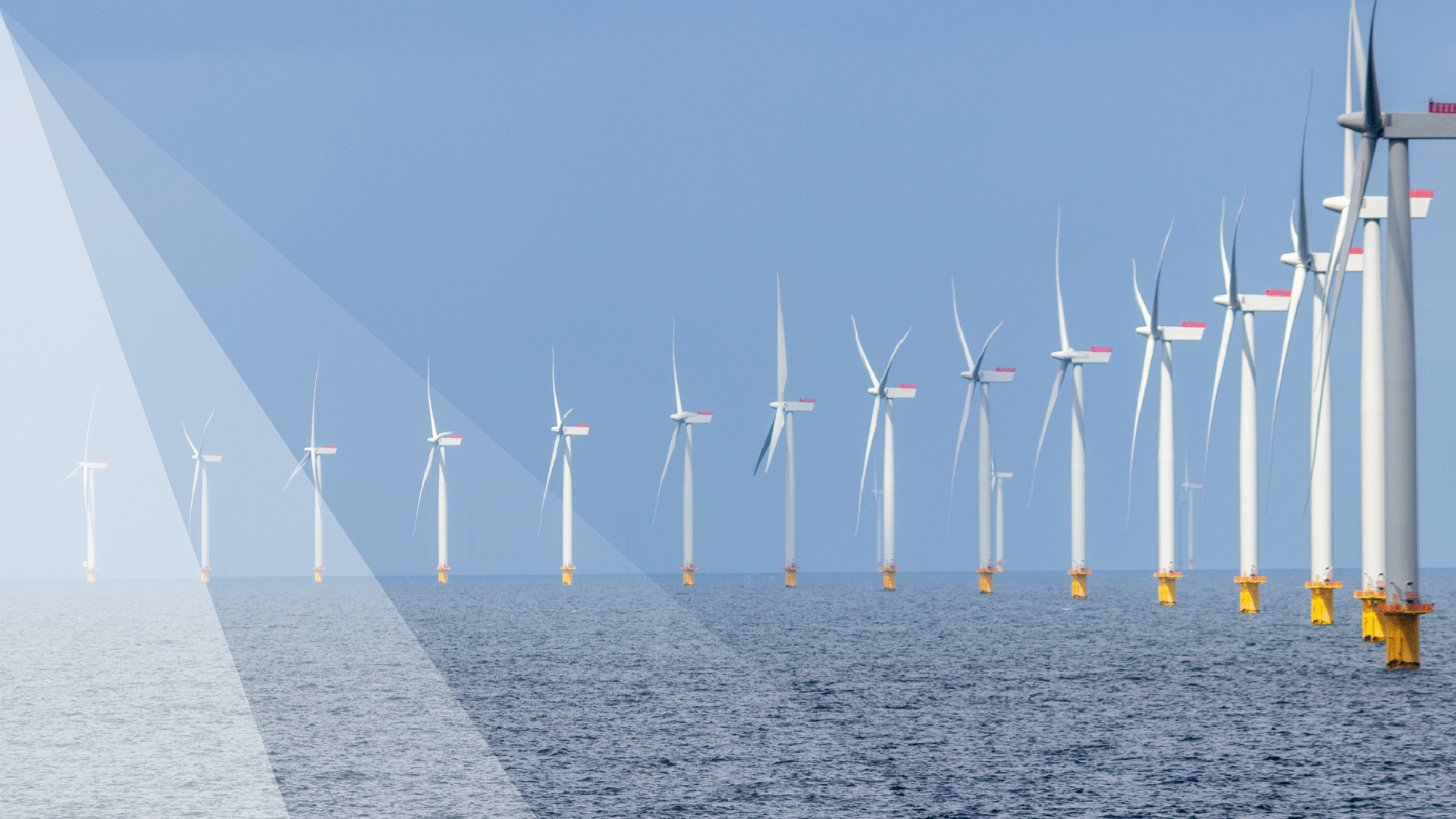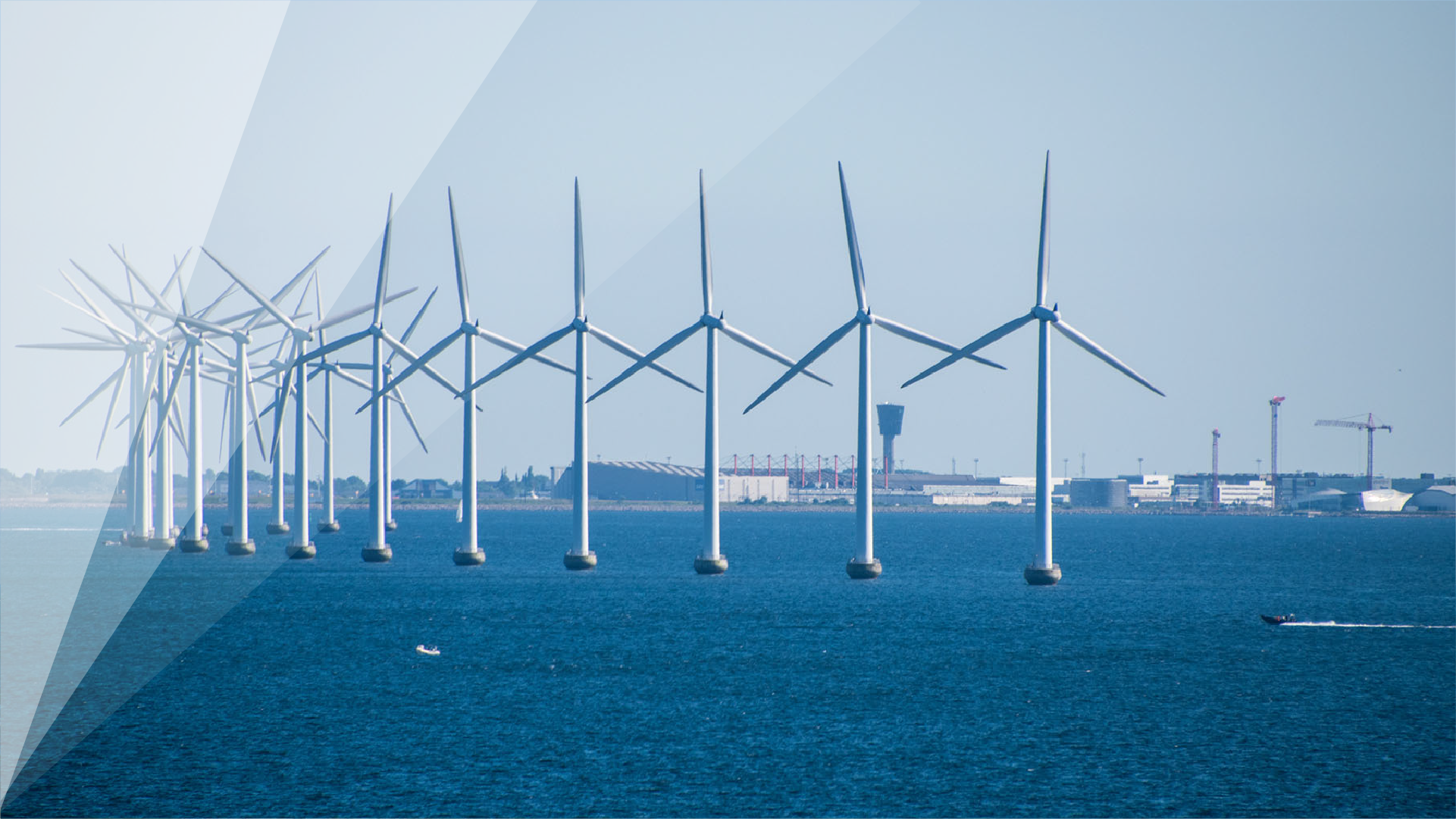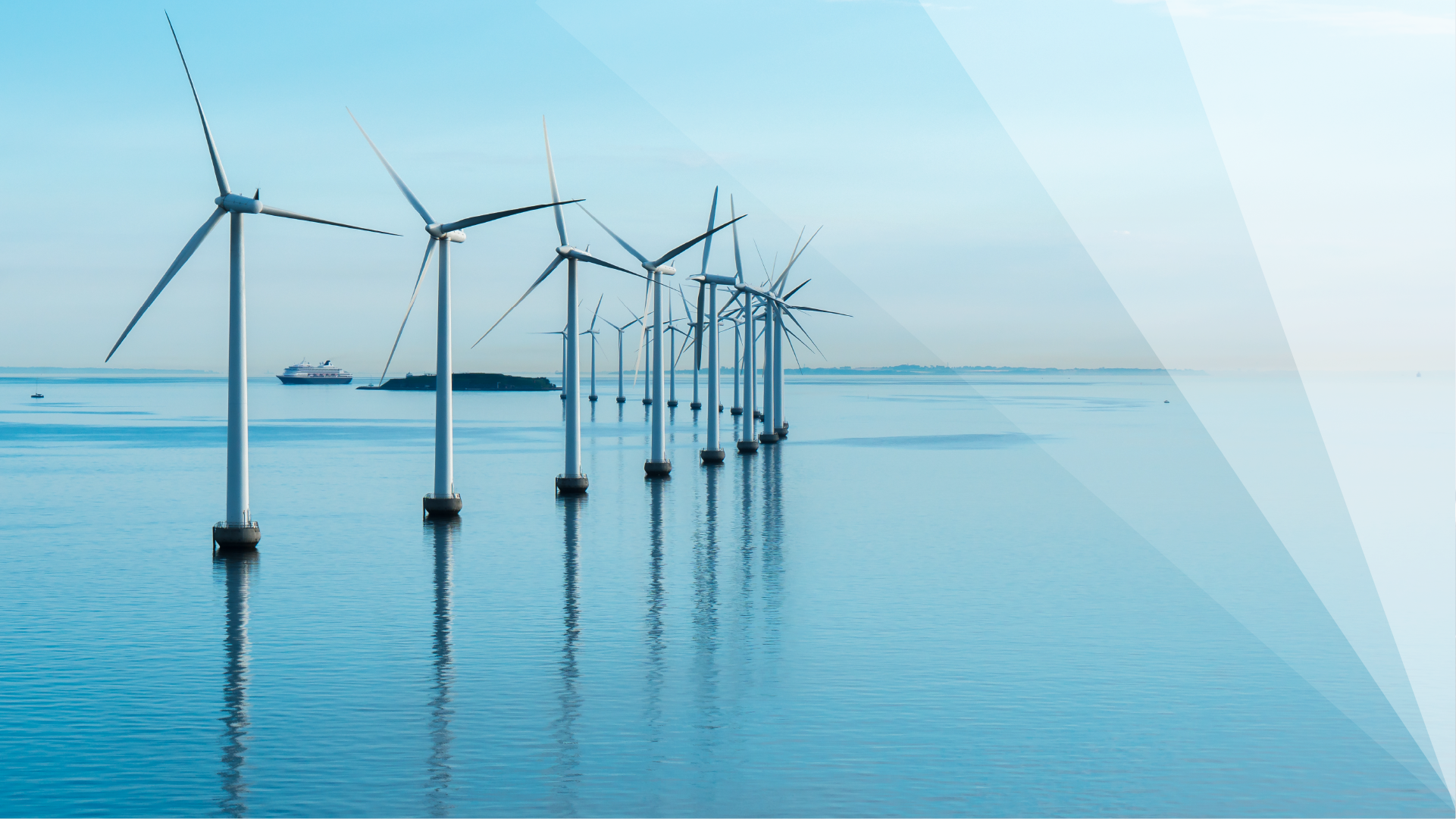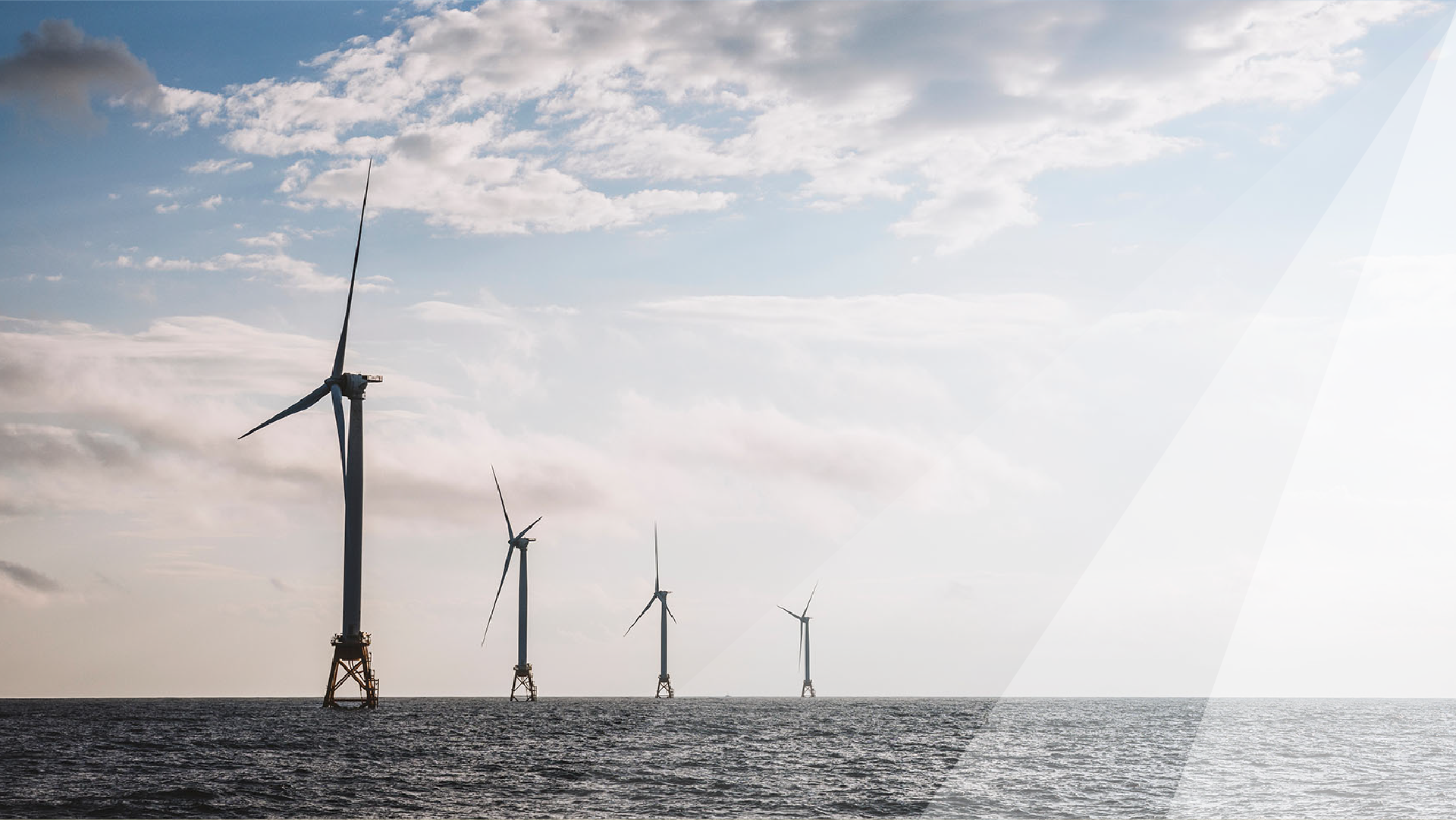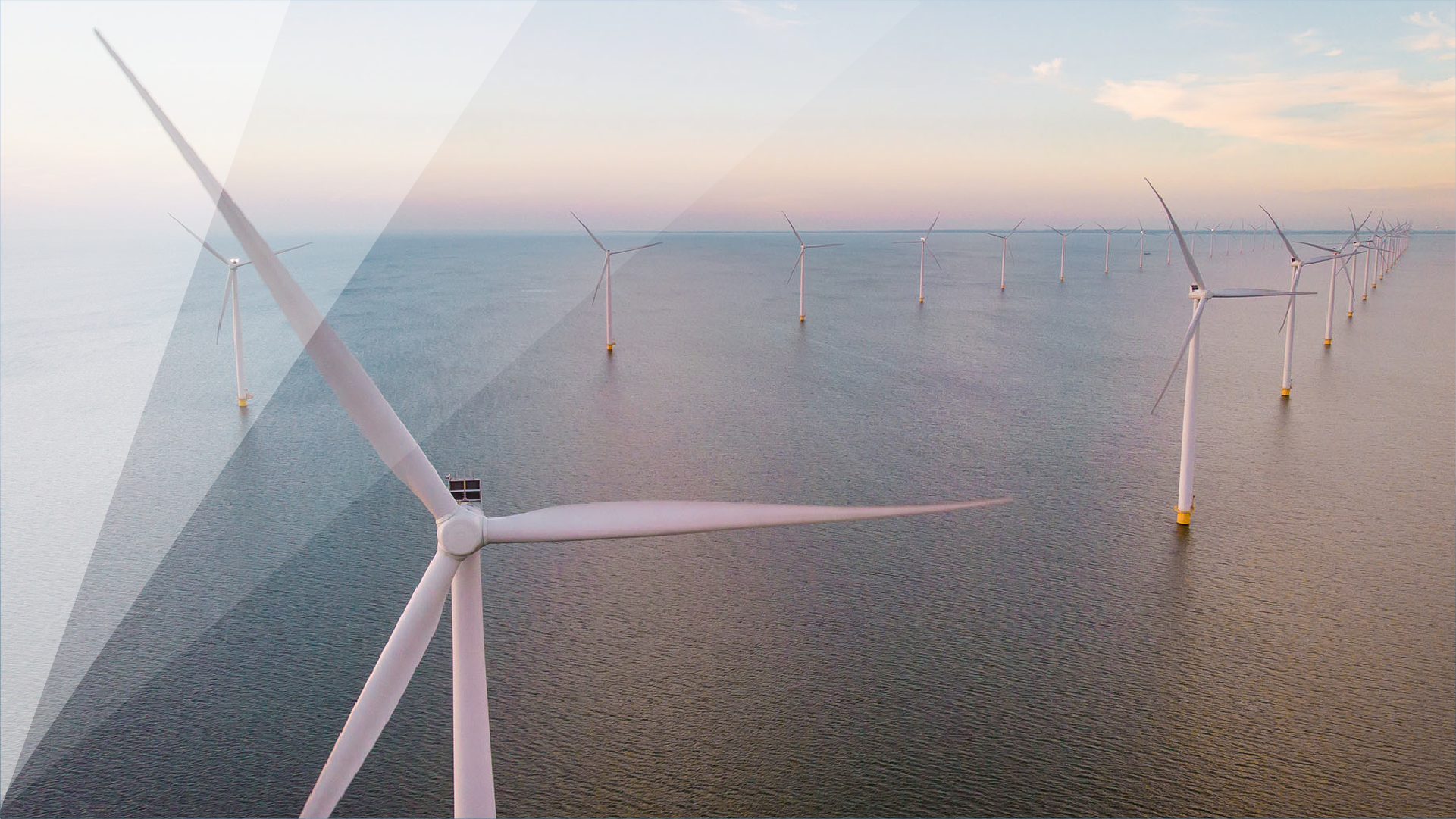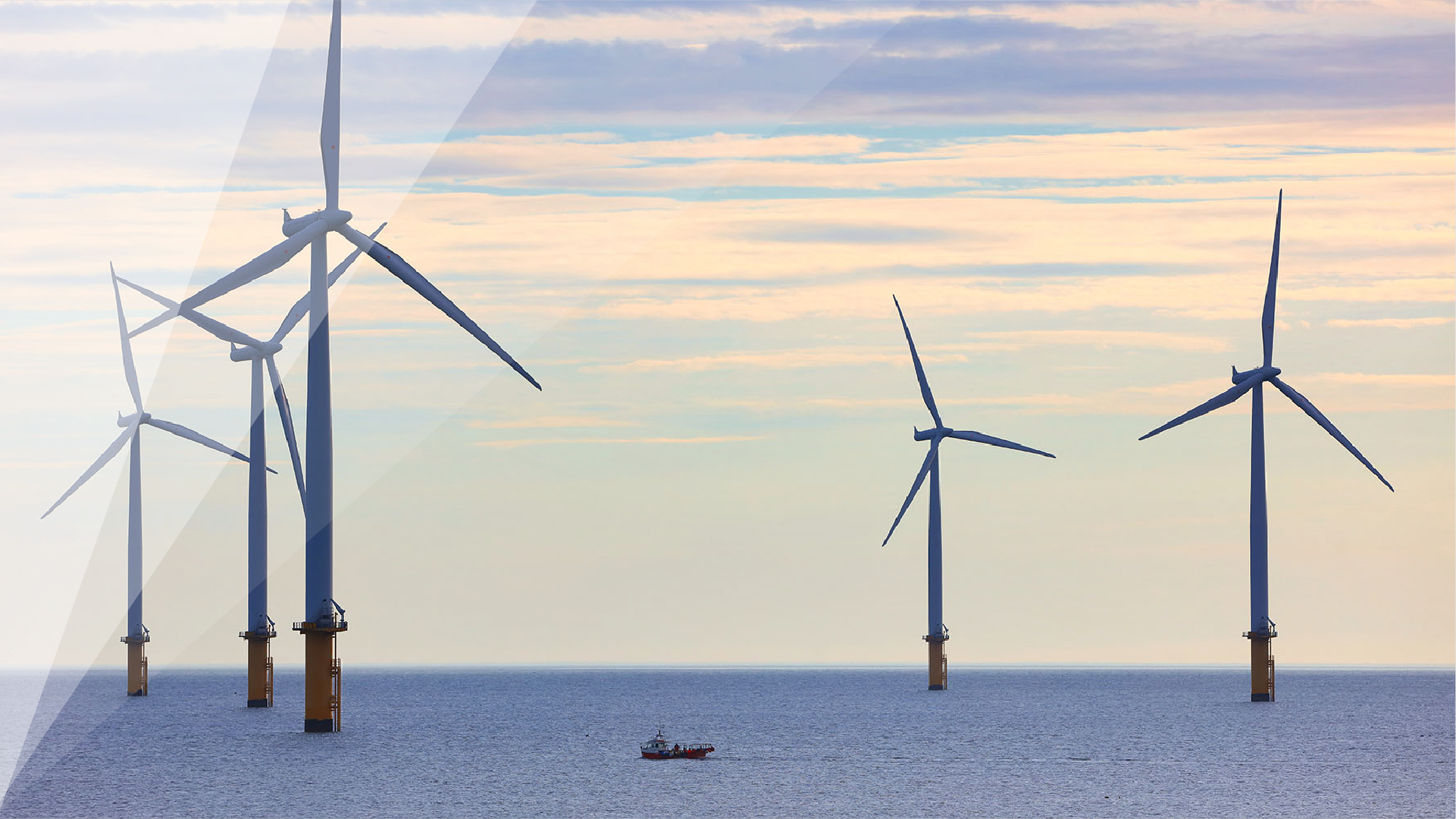
Global offshore wind: UK
Global | Publication | febrero 2025
Information correct as of 23 January 2025.
Focus on UK: Market overview
The UK remains a world leader in offshore wind, accounting for roughly 20 percent of global offshore wind capacity, with 11.3 GW operational. It is forecast that installed capacity will rise to 19.5 GW by mid 2020s. The UK Government has consistently signaled its continuing intention to bring forward more offshore wind. The Offshore Wind Sector Deal signed in 2019 targeted 30 GW by 2030. However, the government has subsequently pledged to increase ambition to 50 GW by 2030 to meet the target for net-zero greenhouse gas emissions by 2050 under the Climate Change Act 2008. Scenarios published by the Committee on Climate Change estimate that at least 75 GW of offshore wind could be needed to meet this target. The size of projects is increasing, enabling economies of scale to be captured.
The UK is planning to significantly expand its offshore wind capacity over the next decade. By 2035, the UK aims to add an additional 21 GW of offshore wind capacity. This expansion is part of a broader goal to reach a total offshore wind capacity of 86 GW.
The table and map below provide an overview of operational, construction and consented projects.



UK: Proposed projects
In additional to the projects outlined above, the UK is planning to significantly expand its offshore wind capacity over the next decade. By 2035, the UK aims to add an additional 21 GW of offshore wind capacity. This expansion is part of a broader goal to reach a total offshore wind capacity of 86 GW.

UK: Development process overview (England & Wales)
From a real estate, regulatory and consenting perspective, the key development milestones for a UK offshore wind project are set out below.

UK: New Leasing opportunities
The Crown Estate Offshore Leasing
As managers of the seabed around England, Wales and Northern Ireland, The Crown Estate launched Round 4 of its Offshore Wind Leasing programme in September 2019. 8 GW of potential new offshore wind capacity was made available across six projects.
The Round 4 pre-qualification phase (financial strength and technical competence) was followed by a two-part invitation to tender (ITT) phase. ITT Stage 1 assessed the specific project financial and technical assessments. Bidders then proposed their best Agreement for Lease (AfL) fee price (in £/MW/year) in ITT Stage 2.
A nine-month habitats regulations assessment (HRA) followed, completing in April 2022. In January 2023, the Crown Estate announced it had signed AfL for six offshore wind projects which are expected to begin generating by 2030 and have the potential to generate 8 GW of renewable electricity.
The Crown Estate has now launched its Round 5 leasing process, specifically focused on floating wind in the Celtic Sea off the coasts of South Wales and South West England. This is expected to be the first phase of commercial development in the Celtic Sea and the Crown Estate intends to award up to 4.5GW of new renewable energy capacity. The tendering process remains underway, with Round 5 ITT stage 1 opening in August 2024.
For further information, please refer to the section on floating offshore wind.
The Crown Estate Scotland Offshore Leasing
In January 2022, Crown Estate Scotland offered 17 projects option agreements under its ScotWind programme, the first round of offshore wind leasing in Scottish waters for a decade. The total number of projects later increased to 19. With the addition of new projects and an increase in capacity of two of the original 17 projects, the total capacity of the ScotWind round has now increased to 30GW.
A number of these sites plan to deploy the latest floating offshore wind (FLOW) technologies, signalling a significant step forward for the industry. For further information, please refer to the section on floating offshore wind.
UK: Offtake support regimes
The primary support scheme for offshore wind in the UK is the Contract for Difference (CfD) scheme, which replaced the previous Renewables Obligation (RO) scheme.
The CfD scheme is, in essence, a power price hedge to pay or be paid the difference between a notional market reference price for electricity and a bid “strike price.” This can lead to the generator receiving payments from or having to make a payment to, the Low Carbon Contracts Company, which has been operational since 2014 and was designated as the CfD Counterparty under the Energy Act 2013. Generators sell power separately under a power purchase agreement (PPA).
Since the full implementation of the CfD regime, there have been six competitive auction rounds to award CfDs concluding in 2015, 2017, 2019, 2022,2023 and 2024. From March 2023, the UK government increased the frequency of CfD auctions to every year (rather than every two years).
Allocation Round (AR) 1, saw CfDs awarded to two offshore wind projects with a combined capacity of 1.16 GW at an average price of £117.14/MWh
AR 2 saw 3.1 GW of offshore wind awarded CfDs, with prices ranging from £74.75/MWh for projects commissioning in the 2021/22 delivery year and reducing to £57.50/MWh for the 2022/23 delivery year.
AR 3 saw 5.46 GWs of offshore wind offered CfDs. The round saw the first “zero monetary budget impact” bids, with strike prices below wholesale power prices at £39.65/MWh for delivery in 2023/24 and £41.611/MWh for delivery in 2024/251.
AR 4 saw offshore wind being given its own separate pot of budget for the first time, resulting in almost 7 GWs of new offshore wind projects being awarded CfDs. The per unit price of offshore wind secured has continued to decline, with successful projects securing a strike price of £37.35 per MWh for delivery in 2026/27. A capacity cap was also introduced to maintain competitive tension.
AR 5 saw offshore wind sit in Pot 1, alongside solar and onshore wind. For the first time since the inception of the CfD scheme, not a single megawatt of offshore wind secured government support under the CfD regime. Whilst a disappointment for the sector, the outcome did not come as a surprise to many in the industry.
The outcome of AR 5 confirmed that , prices available to UK projects under the government’s CfD regime were insufficient to absorb the impact of rising interest rates, supply chain constraints and spiralling inflation which are collectively squeezing margins across the industry. As a consequence, it became clear that some developers were reconsidering the attractiveness of investing in a fully CfD-backed project. To this end, the announcement in July 2023 that Vattenfall would not take an investment decision to proceed with the development of its Norfolk Boreas offshore wind project is just one example of the practical realities of the cost crisis that has faced the UK offshore wind sector over recent years.
Ahead of AR 6, in April 2023, the Government announced a call for evidence on its plan to introduce non-price factors as part of the CfD assessment criteria. This development highlighted a re-prioritisation by Government beyond a “price-alone” focus, to ensure that other factors such as capacity, sustainability, innovation and system flexibility, are also appropriately accounted for by the CfD. The hope was that these changes could assist future projects to deal with the multitude of disruptive trends affecting offshore wind project development globally.
In November 2023, the Government released the strike prices for AR 6, together with for the first time ever, the comprehensive methodology used to determine the strike prices. The methodology note set out the Government’s objectives, approach and assumptions to setting strike prices. Chief among the factors considered were:
- technology specific factors such as capital and operating costs, financing costs as well as any build constraints;
- market conditions such as estimated wholesale electricity prices and the discount which generators may face when signing a Power Purchase Agreement (PPA); and
- policy considerations such as the statutory purpose of the scheme to encourage low carbon electricity generation and the need to have regard to meet Carbon Budget 6 (CB6) and Net Zero targets, the likely cost to consumers, and ensuring security of supply.
The Government also introduced a risk premium for offshore wind technologies, applied as an addition to the hurdle rate. The Department for Energy Security and Net Zero (DESNZ) believes that the combination of cost uncertainty, complex supply chains, lack of capacity and limited price discovery secured through AR 5, as well as transmission network use of system charges (TNUoS) uncertainty warranted a risk premium of 2% be added to the hurdle rates of fixed and floating offshore wind. Accordingly, the hurdle rate with the added risk premium was set at 9.8% for FLOW and 8.33% for fixed offshore wind. The Government stated that this “… will allow room for future price movements until project costs are secured” and support the ambition for the strike price “… to act as a backstop for the auction rather than a significant constraint on participation”.
The Government made some changes to the CfD standard terms and conditions and private network CfD agreement ahead of AR6 including:
- Making generators that directly supply offshore oil and gas facilities ineligible for AR6;
- Strengthening generators know your customer requirements; and
- Providing flexibility to the Milestone Delivery Date where a generator has not received confirmation from the Ministry of Defence of the availability of suitable mitigation measures in relation to interference between windfarms and air defence radar systems.
AR 6 saw technologies grouped between 3 distinct pots, with FLOW comprising part of Pot 2 and all other Offshore Wind generally forming Pot 3. In structuring Pot 3, the UK Government also acknowledged the fact that there was a mixture of projects bidding into AR 6 and as such, Pot 3 was split between Offshore Wind Permitted Reduction projects and new Offshore Wind projects. Offshore Wind Permitted Reduction projects are those projects that had secured a CfD in a previous AR; however, have since chosen to reduce the capacity under such CfD by up to 25% in order to permit that project to re-bid into AR 6 owing to the economic limitations of the strike prices achieved in previous ARs in the context of the current market environment.
On 31 July 2024, the new UK Government announced an increase of £500million to the AR6 budget, taking the total funding allocation to £1.5bn; 7 times that of the AR5 budget. A total of £1.1bn was allocated for offshore wind, a £300million uplift and the largest increase for any of the sectors of AR6.
The results of AR6 were announced on 3 September 2024 and over 130 projects were awarded a CfD, with an aggregate capacity of 9.6GW. This makes AR6 the most successful allocation round to date. Almost 5GW of capacity was awarded to offshore wind in total; however, 1.6GW of this was for Offshore Wind Permitted Reduction projects, which means this is not ‘new’ capacity.
Although the AR6 results are an improvement on AR5, these figures still place a lot of pressure on AR7 in order to meet the UK’s clean energy goals. Energy UK have previously estimated that the AR6 and AR7 CfD auctions would together need to secure 21GW of new offshore wind capacity for the UK in order to reach the target of 50GW of offshore wind capacity by 2030, which as aforementioned, has since been increased to a pledge of 60GW.
On 18 October 2024, further changes to the CfD auction ahead of AR 7 were announced, which is due to open in March 2025. The majority of the amendments are focused on repowering, FLOW, and changes to metering. In terms of impact on offshore wind, the key outcomes to note are that certain changes will not be made for AR7, which are as follows: (i) hybrid metering will not be introduced for AR7, and any future amendments will be evaluated based on broader market developments; (ii) no changes will be made to support improved coordination of offshore transmission infrastructure; and (iii) no changes to the indexation approach will be made at this stage. Also relevant to AR7 is the introduction of the Clean Industry Bonus (CIB); see further detail below.
UK: Hot topics
Revenue stacking
Innovative offtake strategies are increasingly being implemented by developers in order to improve the internal rate of return for their projects, having regard to the cost-related challenges that have faced the development of offshore wind projects in recent years. To this end, revenue stacking models are increasingly being implemented in the offshore wind sector, with developers taking advantage of “stacking” corporate power purchase revenue streams with CfDs, and in some cases also adding merchant revenues and co-location (such as with energy storage systems) to their revenue mix.
For more information please see our detailed article on revenue stacking in the context of fixed-bottom offshore wind.
Floating offshore wind (FLOW)
As evidenced by the various references to FLOW throughout this chapter, the development of the FLOW sector is gathering pace. The GreenVolt floating offshore wind project was successful in its AR6 bid, succeeding with a £139.93/MWh strike price bid for 400MW capacity. This is good news for the sector and there are hopes that the project will help pave the way for the rest of the FLOW industry in the UK.
For more information please see the section on floating offshore wind.
Chinese OEMS and the supply chain
Owing largely to the severe supply chain constraints faced by the offshore wind sector as a whole, there is an increasing focus on finding alternative equipment solutions. One such option is to turn to Chinese original equipment manufacturers (Chinese OEMs) where there has previously been reticence to do so in the UK market.
The leading Chinese OEM, Goldwind, commissioned 16.4GW of projects in 2023 alone, and continues to dominate the global rankings of wind turbine makers alongside other Chinese OEMs. However, the Chinese OEMs are heavily reliant on their home markets and the vast majority of their projects are onshore.
There is speculation that this reliance may slowly evolve however; last year Chinese OEMs commissioned 1.7GW of wind projects in 20 markets overseas, including five EU member states. There are various prevailing concerns in the market with Chinese technology, particularly regarding their track record, likely life expectancy, and possible environmental and/or social impacts (including compliance with EU emission and other ESG standards).
Despite this, the continued pressure on the supply chain and the potential cost benefits of using Chinese OEMs is generating momentum for the adoption of Chinese OEM technology in the UK and European offshore wind sector. The market continues to pay close attention to how this develops, and we are seeing detailed bankability analysis being commissioned by sponsors and lenders alike to assess the viability of using Chinese OEMs for future offshore wind projects in the UK and Europe.
Spotlight on OFTOs, shared infrastructure and changes to Anticipatory Investment
In the UK, the offshore transmission owners (OFTOs) are responsible for offshore transmission assets. Whilst in theory OFTOs may design and build offshore wind connections, in practice, offshore wind farm developers have always elected to build the link themselves, in order to mitigate the risk of non-delivery of the connection assets. After commercial operations start, the transmission assets are then sold to the selected OFTO. However, developers are often keen to provide the operations and maintenance services in respect of the OFTO assets to ensure availability standards are met (particularly as no direct compensation is payable by the OFTO to the wind farm in the event of a connection outage).
While placing responsibility for the development of offshore transmission into the hands of generating asset developers has assisted with the rollout of offshore wind capacity in the UK, the limitations posed by the onshore grid remains a key issue for developers and investors and should also be a key focus for the UK Government. Ever -increasing cost pressures are pushing developers to find new ways to mitigate their capital costs. This includes absorbing operation and maintenance services and creating shared servicing hubs and infrastructure platforms to support the construction, operation and maintenance of co-located projects.
The UK Government is also concerned about the constraints of the current offshore transmission infrastructure on offshore wind capacity, especially with rising transmission network use of system charges (TNUoS). Shared offshore transmission infrastructure is another potential way in which to reduce these costs.
Ofgem's April 2022 consultation proposed encouraging early-stage projects to collaborate by making anticipatory investments (AI) in offshore transmission infrastructure. This includes a revised risk allocation between the initial user, later user, and consumer. In October 2022, Ofgem confirmed its intention to proceed with these proposals, with further steps expected to take up to 24 months for implementation.
In July 2023, the Government released recommendations from the Offshore Transmission Network Review (OTNR), highlighting the need for a new approach to support the UK's decarbonisation and net-zero objectives. This could lead to a rethink of the current OFTO framework towards a more centralised network design.
UK Policy developments
Energy Act 2023
The Energy Act 2023 (the Act) received Royal Assent on 26 October 2023. Key aspects of the Act that impact the offshore wind include:
- amendments to the Electricity Act 1989 to introduce multi-purpose interconnectors (MPIs) as a licensable activity, providing certainty to investors and developers and aiding the integration of renewable energy, such as offshore wind, onto the grid.
- the Act incorporates the policy proposals of the new Offshore Wind Environmental Improvement Package (OWEIP), aimed at speeding up offshore wind deployment while protecting the marine environment. This includes new powers to amend the HRA process for marine aspects of offshore wind projects, thereby accelerating the consenting process.
- the Act introduces strategic compensatory measures, facilitating collaboration between developers and the UK Government to address unavoidable environmental impacts. An industry-funded Marine Recovery Fund (MRF) will support these measures, though it has yet to become operational.
For more information on the Act and its implications for the offshore wind sector see: UK Energy Act 2023: Environmental commitments for offshore wind.
Energy and Crown Estate Partnership
On 25 July 2024, the UK Government introduced the Great British Energy Bill into Parliament to enable the establishment of GB Energy, the UK Government’s new publicly owned ‘clean energy superpower’. The government is providing GB Energy with £8.3bn of funding but is looking to raise a further £60bn of private investment.
On the same day, GB Energy’s first strategic partnership was announced with The Crown Estate. The new partnership aims to accelerate the delivery of clean energy infrastructure and boost the UK’s offshore wind sector, claiming to lead to up to 20GW-30GW of new offshore wind developments securing seabed leases by 2030.
Alongside the announcement, the UK Government also proposed a new Crown Estate Bill, under which the Crown Estate is set to receive new borrowing powers, aimed at boosting investment in preparing its seabeds for offshore wind and other projects. This includes the ability to borrow capital and invest more flexibility.
Proposed Planning reform
In July 2024, it was announced in the Kings Speech that a new Planning and Infrastructure Bill would be introduced. The proposed bill is wide reaching beyond the energy sector, but amongst its aims, it looks to streamline the planning process for major energy projects, including upgrading the national grid and boosting renewable energy, such as offshore wind. This bill is part of a broader effort to address some of the key challenges faced by the offshore wind sector.
Spotlight on Clean Industry Bonus (CIB)
For the upcoming AR 7 (AR7) the Government announced that it will, subject to parliamentary approval, implement a non-price related support package known as the Clean Industry Bonus (CIB).
When first announced, the CIB was referred to as the CfD Sustainable Industry Rewards (SIRs) (and is referred to as such in the applicable legislation and documentation), however the scheme has evolved and is now known as the CIB.
The CIB aims to address recent supply chain challenges that have been hindering the deployment of offshore wind by providing additional revenue support to developers, through a series of lump-sum payments in addition to their regular CfD payments, should they invest in the economic, social, and environmental sustainability of their supply chains. The criterion for such investments is ‘investment in shorter supply chains’, ‘investment in more sustainable means of production’ and ‘investment in shorter supply chains that use more sustainable means of production’.
Like the CfD regime, CIBs will be awarded through a competitive auction. Developers will submit proposals in pursuit of the sustainability criteria the Government is offering support for and will compete against each other on the quality and cost of their proposals. The CIB allocation framework (first published in November 2024 and subsequently amended in January 2025) sets the minimum standard value to participate in the AR7 auction as £100m per GW for a fixed bottom offshore wind project and £50m per GW for a FLOW project.
The first CIB allocation round runs from 13 February 2025 until 14 April 2025. The Government proposes that the CIB SIR will also apply to AR 8 and AR 9, although, they have flagged further reconsideration of the minimum standard values and developments to the investment criterion.
UK short-term investor outlook
Notwithstanding the challenges faced by the offshore wind industry domestically and globally in recent years, the market outlook for the UK generally remains optimistic. Significant developers such as Ørsted, SSE, Equinor, Ocean Winds, Corio, bp and RWE continue to signal their commitment to the sector, and politicians on both sides of the floor remain supportive of the accelerated deployment of UK offshore wind. This sentiment has only been strengthened by new investment initiatives such as the creation of GB Energy and the Crown Estate partnership.
Consented projects continue to rely on the CfD regime for revenue support, which remains a key tenet of the bankability case for projects to avail themselves of project financing. That being said, more flexible financing structures and revenue stacks (including corporate PPAs) are being actively pursued and implemented, particularly in light of the outcome of CfD AR 5 and prevailing uncertainties regarding inflation, electricity prices and supply chain constraints.
There are also significant M&A opportunities for investors. Given the increased upfront costs faced by projects during the development phase, the appetite for joint venturing and pre-FID divestment is strong. This has also been influenced by the scale of projects (including FLOW) approved by the Crown Estate Scotland, as in certain cases, the targeted size of these projects will almost certainly require pre-FID divestment.
M&A activity in operational projects also remains very strong, as many of the major developers continue to seek to divest offshore wind assets, moving to a ‘utility light’ model by recycling these sales proceeds into future projects.
In addition, a number of projects have applied and/or secured rights to extend their existing projects. We have already seen a number of these projects seek additional investment and financing to fund development works and we expect similar opportunities of this nature to come to market.
Subscribe and stay up to date with the latest legal news, information and events . . .

